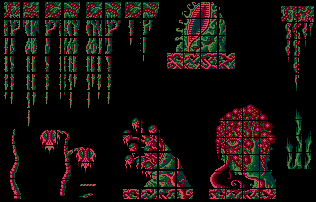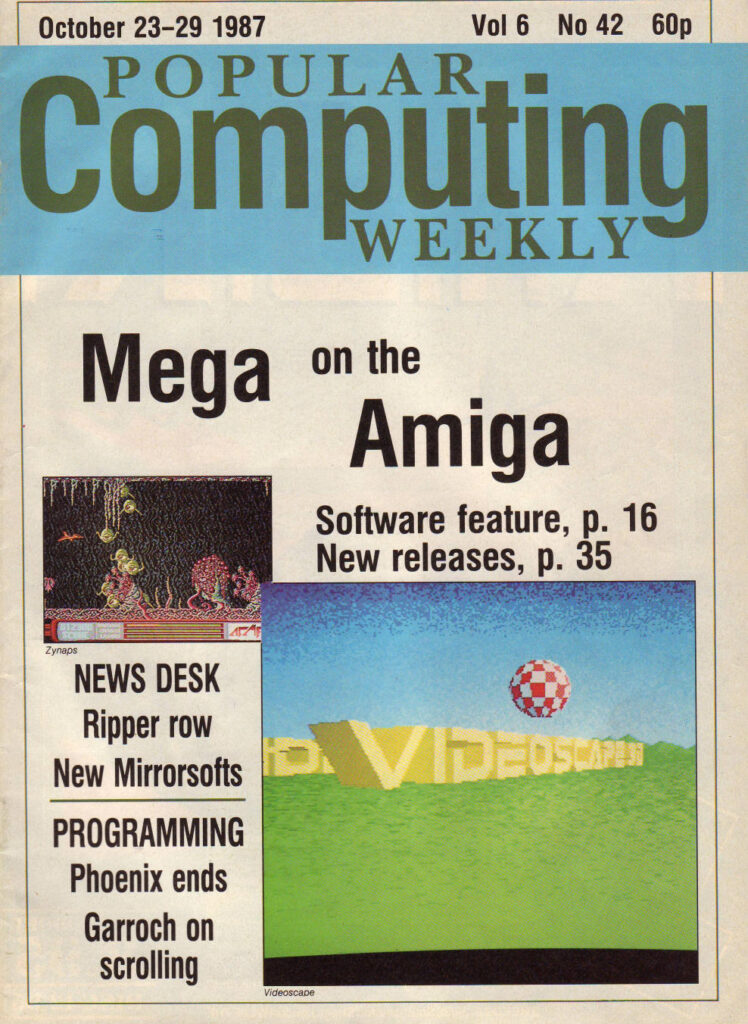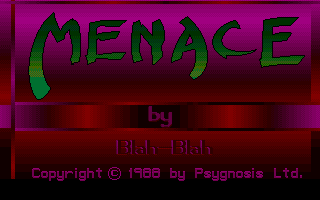
DMA Design officially started sometime in 1987 with the beginnings of what was to become their first game; Menace, and ended on a high in 2000 with Grand Theft Auto 2. And what a ride it turned out to be!
In these articles I hope to detail as much as I can of DMA‘s history, the highs the lows, and what it was like to work there for almost 10 years. Since computer games have become mainstream, there are many places where information on games companies can be found, DMA Design is referenced everywhere on the web, but all that data comes from the games on the shelves, from playing the games, reading the manuals or old magazine articles.
But because I was there before DMA existed, I was part of it all during the second golden age of gaming, and watched it all crumble at very end, I can, I hope, go under the hood a little, and perhaps shine a light on what it was like inside the company itself. Perhaps even talk about some of those unknown projects, for whatever reason, never saw the light of day – and there were many!
Wherever possible, I’ll try and use original images and original mock-up’s to illustrate, rather than simple screen grabs, as this helps to show how final art was produced, and also gives an outlet for the huge amount of disks, documents, hard drives and sometimes video that have been hoarded away and forgotten about.
This source material shows not only the thinking behind the art, but sometimes the process used to bring the creation to the screen. It is almost like an electronic archaeological dig, and inevitably it will have large, seemingly empty, areas where artwork or program code had been lost to time and only the memories remain.
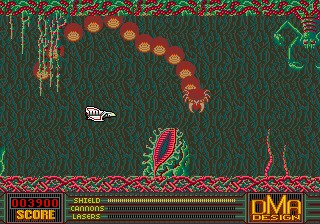
Conversely, other sections, may seem bloated with the sheer richness of material available, and you can be sure that there is more to show than you’re actually seeing here. When the computer games industry was still in its infancy, and even before DMA Design was founded, Dave Jones started work on his first game from the comfort of his bedroom at his parents’ house.
These humble beginnings saw the start of a company that would but quite literally rock not only the games industry, but the world; and make it a household name by the shear quality and originality of the work it produced. The game that started it all was; Menace.
Before that happened though, in 1986 an old school friend named Colin Deasley told me that there was this computer club, and I should probably go to it. The club in question was held at the Kingsway Technical College, more usually described by us as simply “The Kingsway Tech“, while the club itself called KACC, for the “Kingsway Amateur Computer Club“. It was miles from my home, taking 2 different busses to get there, and was complicated by the fact I was told to take everything with me; my computer, and my TV!
I was lucky that I had a little 14″ black and white CRT portable – very few had a portable TV in their room in the 80s, but I had to bundle all this up into a big holdall – normally reserved for my Cricket bat and pads, and cart it across town. For a 16 year old on his own, this was hard going, but it was something that forever changed my life.
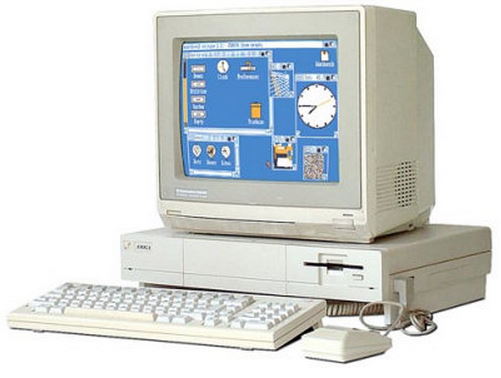
Although it seems an odd thing to say now, most thought of computers and games only suitable for geeks, and that using a computer marked you as one, while those that used them considered themselves ‘enthusiasts‘. When I started going to this “geeks” club, Steve Hammond, Dave Jones and Russell Kay were already there, having been going for about a year or so already. The club was in a chemistry lab, which I only remember because it had Bunsen burners on the desk we had to avoid, and tall stools rather than chairs. While this club was mainly use to copy the latest games, or for teachers to talk about computer science, Dave, Steve, Russell and myself were far more interested game creation. I had my Commodore Plus/4, Steve his Commodore 64, and Russell was on the Spectrum, and Dave… well, Dave had his legendary Amiga 1000 – and I wasn’t jealous at all! The first night I was there, Dave had his A1000, and that, along with quickly “clicking” with the guys probably help get me to go back the following week.
Dave had taken voluntary redundancy of around £3000 and left Timex to attend university to do a Computer Science degree. He then used the money to skip to the next generation of computers by buying his first Amiga, years before anyone else, and what an investment that turned out to be.
As I said, the first time I was there Dave has his Amiga, and I remember it as clear as day. I setup at the back of the room with my Commodore Plus/4, showing Steve my smooth scrolling dreadnought spaceship having been inspired by seeing Uridium in a magazine (released Feb 1986), and I copied it’s scrolling and bas relief spaceship design – though mine was mono with stippled graphics, not multi-coloured mode. It was lovely and smooth, but being on the Plus/4, there were no sprites – that was a whole other problem. Steve was suitably impressed, as it was all in assembler complete with raster splits (where an interrupt occurs at a specific line on the TV), but all that stopped when Dave powered up his Amiga.
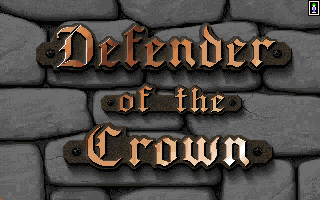
The first game I saw him run was Defender of the Crown, and it’d fair to say after being used to spectrum and Plus/4 games, this was simply jaw dropping.
To this day, I can’t look at this title screen without being impressed at it’s quality. It looked real…. He also showed off World Class Leaderboard and DPaint II, which just cemented it’s place as everyone’s dream machine.
The future members of DMA all quickly became friends and got to talking about games, and not just what releases were just around the corner, but writing them. It turned out that Russell and Dave were in the middle of making a game called Moonshadow some of which I got to see at . I remember being a bit in awe that there were actual paid developers at this club – my dream. It later turned out that Dave had gotten a little bored of the Spectrum, and had left it to Russell to finish it – well, write the whole thing it turned out, while he focused more and more on the Amiga.
I was busy with a breakout clone called Freek Out – called that because I was a terrible speller and there was no Google or MS Word to correct me! I was writing this using the Plus/4‘s build in monitor, using it’s line assembler.

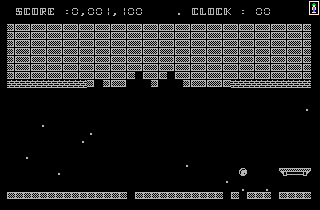
The line assembler let you assemble code directly into memory, one line at a time. There was no source code just what was in memory. I’d keep a notepad of all the function addresses, and leave spaces between everything so if I need to, I could copy blocks of memory about and fix up all the address pointers. It was incredible I got anything working like this, let alone created a full game!
This was my second attempt at the game, as I had one using proper hires sprites and a notepad full of addresses that I accidentally left at Steve‘s house. Rather than wait till I could get it back, I got annoyed and just stared a new, simpler one based on simple characters. Steve did the graphics and a chunk of the levels, and I coded the game and the editor.
Each screen was made from a block which was a 2 character lookup table, and a line of these 19 bytes picking which block, then a whole level, which was 8 bytes, selecting lines. Yup, each level was just 8 bytes…. we had a stack of levels. Cascade did eventually show an interest in it, but wanted the ball to move smoothly, and I really wasn’t about to do that using the built in monitor, so I just left it.
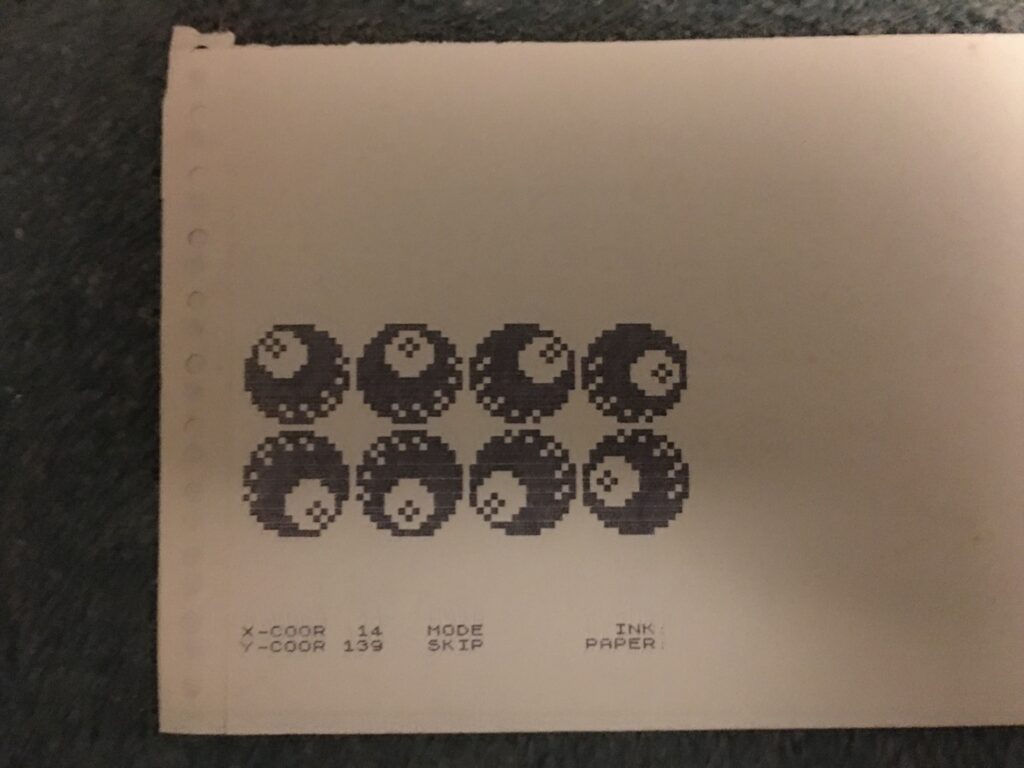
Dave by now had also written his own smooth scrolling dreadnought, but this time for the Spectrum, It was enough of a start for Dave and I to then work together on the first of the games that was to bear the name: The Game With No Name – a theme in naming that would last for years. These being the days of odd games, the Game With No Name featured a rotating eye which pointed in eight directions and at each direction it would fire a missile.
Both Dave and I got to the point where the level was scrolling, and the eye was firing from each direction, and that was about it. Like most of these early attempts, we never got that far into them, as we were usually more interested in the tech, than the game. Most games back then, were the result of an interesting bit of tech, and not sitting down to design a game. This still holds true for many modern games, where a coder has done a cool effect and built the game around it. Both Lemmings and GTA were created using this method as well of course…

Dave quickly bored of Spectrum programming, no doubt prompted by his new Amiga. Leaving Russell to finish Moonshadow, or Zone Trooper as it finally became, he started coding for his new toy. Being a fan of the arcade game Salamander, he started by programming a ship and a multiple – a sort of free-floating weapons pod – and showed the results to us one day when we had visited him in his bedroom.
The demo consisted of a blob which was following another blob; these were the early warning signs of having a programmer do his own graphics!
Meanwhile, Russell and I began work on a game called “SpatterLight“, having had a marathon name making up session in Dave‘s room, it was to be a mixture of a ZX Spectrum game called SPLAT! and the arcade game, Gauntlet. As I said before, most games were started because of a new technique, and this was no different. Russell had a new sprite routine he wanted to play with – based on ZX Spectrum version of Cobra if memory serves, and this would be the perfect avenue for it.
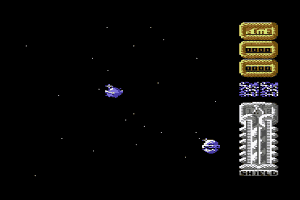
A higher priority for Russell though, was finishing off Moonshadow which now also had to be ported to the Amstrad CPC, so I began my own game, a 2 player single screen blaster with the grand title of “Game with no Name 3!“. Steve, meanwhile, was convinced that the text adventure had a bright future – something that he maintained with a straight face as far as 1997! (and if we’re honest…. still secretly hopes so).
Some years later, KACC shut down and another computer club later took place at the Dundee College of Technology, what is now called Abertay University. Even though it would later become a university, it would always be known to us all as Bell Street Tech. By the time Steve started his HND in computing at the college, Dave had already been there for a while, and it was here he made some more friends that he would eventually hire at DMA. Many new members appeared at the club, including a lot from the old KACC. It was here that Brian ‘Biscuit’ Watson – entered the scene along with some more of Dave’s university chums.

All the while, Dave had been carrying on his Amiga programming and making best use of the smooth scrolling and parallax effects that the Amiga did so well. Some time later, he got to know a guy called Tony Smith, through some connections with an Amiga group he was involved in called “The Kent Team“.
The first bit of art I remember seeing from Tony, was his first ever bit of Amiga art, done in DPaint. It was a single full screen tree, with a huge amount of detail, and it was stunning. This made it an easy decision for Dave to bring Tony on board as his artist, and he started getting some art together for Dave‘s new game.
From this excellent start, Tony went on to create backgrounds and aliens for Dave‘s game, currently called CopperCon1 (an Amiga Hardware register). Steve did the first ship for Dave, where it remained for quite some time, even appearing on the front of a magazine, “Personal Computer World” along with the first public showing of the game, was the pre-DMA Design name: ACME software at the time, and Dave was now trying to sell his new CopperCon1 game.
Proto-Menace naturally needed sound effects to compliment the graphics. Again, temporary ones of various kinds were used. Several in fact. The arcade game Salamander proved its use once more as we went to the arcade in Dundee’s Reform Street armed with a tape recorder. Steve and I played the game and with Dave nonchalantly leaning on the unit and holding the microphone discretely to the cabinet’s speaker (difficult because the speaker was at the top), while some very muffled sound effects were obtained.
Even this made for a better game playing experience than his original effects, for which he had shouted “bang” and “boom” into the microphone!
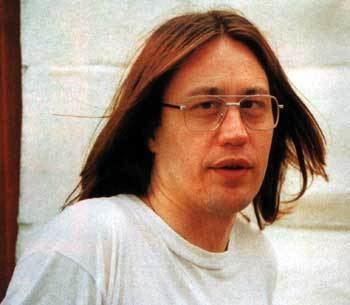
A game needs selling and Dave first approached Hewson where apparently Andrew Braybrook himself viewed it, and recommended that they take it. This was no small measure of accolade, I had been following a series of programming articles by him in the magazine ZZap64! and held him in pretty high regard. He created such classics as Paradroid, Uridium and Rainbow Island. In fact, he was one of the few handful of industry celebrities that we’d had all heard of, and being a well known games programmer was for us the height of cool. To have a game judged by him and then accepted was amazing. Braybrook was the game’s industry’s equivalent of a film star.
The future of DMA might have been vastly different – had it happened at all – but for a small turn of events. Hewson wanted Dave’s game to be the official Amiga version of Zynaps and while he thought seriously about it, he came to realise that he wouldn’t make nearly as much money from it compared with being an original product. So he looked elsewhere.
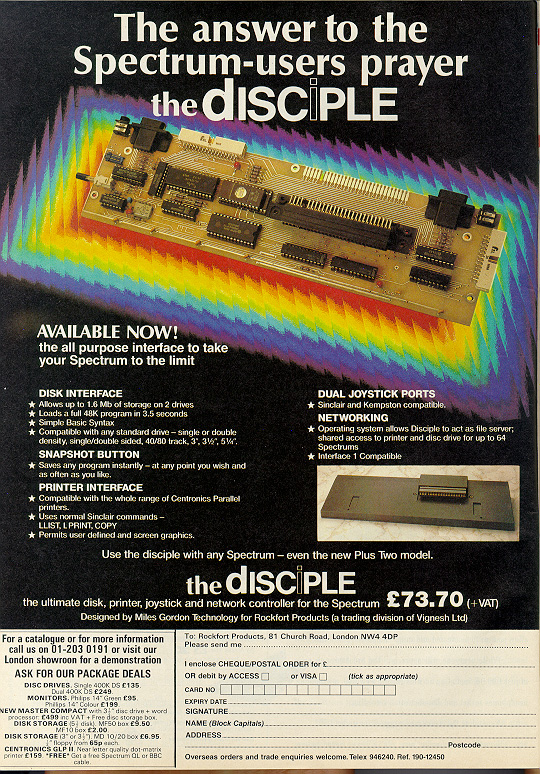
Meanwhile, Russell was still struggling with the re-titled Zone Trooper and was getting very fed up with it all. He had a 3 1/2″ disk drive for his Spectrum called a Disciple which had a habit for eating Spectrums! Every now and then, the disk drive would somehow blow up the Spectrum and Russell would have to get another one from Dave. By then end, he managed to almost break every one of Dave’s Spectrums!
Dave’s search for a publisher had taken him to the doorstep of a company based in Liverpool; Psygnosis. All the elements were in place and now the race was on to finish. A name change took place and now the scrolling shoot-’em-up was called Draconia. While Tony started churning out great graphics at a frightening rate, Dave started to build levels for the player to fly through and paths for the bad guys to follow.
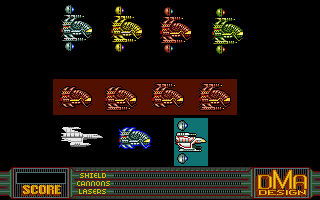
By the time that the freshly-monikered Draconia had gained its first few playable levels, Psygnosis had been persuaded to let Brian do the Atari ST version. His first problem was replicating something that the Amiga excelled at and the ST simply couldn’t do easily: smooth scrolling.
Fortunately he was up to the task and his scrolling method was a memory-hungry design using no less than 8 screens each of which was two pixels further on than the last one. He was very proud, and strutted around the room as if he had just solved world hunger.
Tony started modifying his graphics so that they would fit in the ST, which had less colours to work with. These included the low-colour ships and a vertical panel. Since Psygnosis couldn’t decide which player ship they liked, Tony ended up drawing so many more variations on player ships that he even started to label his disks “This weeks ship”. It was a running joke for a LONG time.
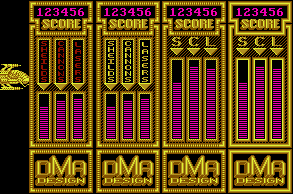


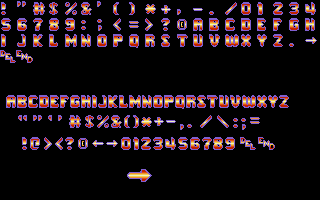

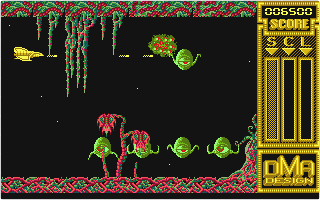
The company name Acme, proved to be already taken in the form of a design company, so Dave needed another name. This one was chosen in a name-storming session at the Bell Street Tech computer club. Another Amiga hardware register came into play and this time it gave it’s name to the company: DMA Design, standing as it did for Direct Memory Access although it didn’t stand for anything as far as the company was concerned, Dave just thought it sounded cool and didn’t go for the many alternatives which included ‘Visual Voyage‘ and the not-so-serious ‘Alias Smith and Jones‘ (which was a T.V. series at the time).
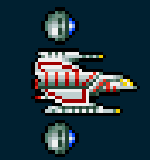
Years later, DMA would be asked by countless journalists what DMA stood for, and after answering too many to count, he thought it funny to remark, “Doesn’t Mean Anything”. Frighteningly very few journalists ever got the joke, and DMA members would sigh and explain it. Once chosen however, Tony was able to do a new logo.
Having a publisher located in Liverpool meant a long trip every now and then for when Dave went to see them. I would go along to keep Dave company and then Steve would go along to keep me company, such was the arrangement! It’s about a 4h 30m drive from Dundee to Liverpool, but Dave’s record, before speed camera’s, was 3h 30m – with a brief stop for food! Perhaps the roads were just more empty back then!

Psygnosis were in the prestigious Liver Building in Liverpool, and while Dave and Tony would talk shop, Steve and I would head into town and check out the arcades and shops. These trips were great fun since Dave would hire a nice car as a substitute for his own one, which wasn’t so nice at the time – in fact his own little black Mini was run down to the point that the door handle had broken off, and it was a struggle to get in and out of. We’d start the journey at the crack of dawn, stopping for breakfast on the way down and for tea (dinner if you’re posh) on the way back. It was great fun and all very new for us (I had just turned eighteen at this point). Even after all this, Tony was never actually seen by anyone, except Dave; something that remained true for years. The rest of the team finally met Tony at the PCW Computer Show in London after the office opened, while Steve never actually managed to see Tony at all – Ever!

It was now early summer of 1988 and Draconia was almost finished. Dave and Tony both went into overdrive to get those last bits and pieces completed.
Tony animated an end-sequence and Draconia finally gained some high-quality sound effects from musician David Whittaker. Everything was finished and finalised, and then in another little twist of fate – another game was released with the same name!
CopperCon1 gained its final renaming, illustrating a principle that Dave had since decided on, which was that a name should also be a word that crops up in everyday conversation or is part of a familiar phrase. CopperCon1 became Menace. It also marked another significant point; one of us had actually finished a commercial game!
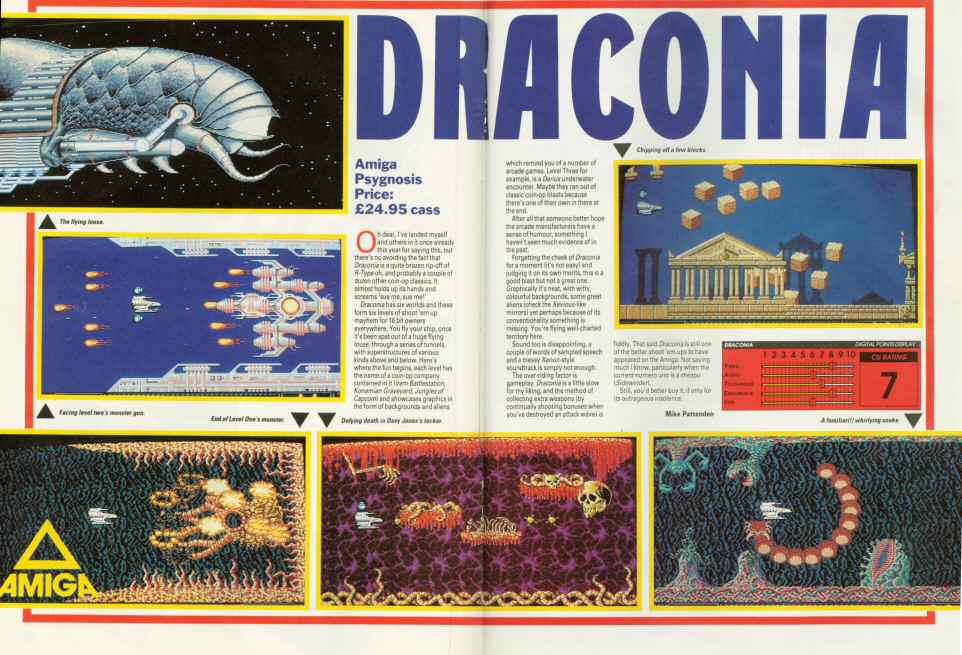
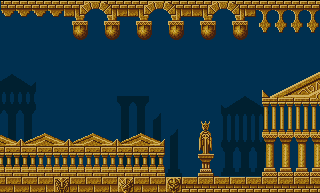
A finished game meant cash, and cash meant a fuelling of Dave’s now-legendary passion for cars. First into his garage from the Menace Money was a 16 Valve Vauxhall Astra which he immediately dashed around to show us and of course take us for a ride. Dave was a very happy man! This passion shows up in his games occasionally, an example of which is the cheat mode for menace, activated by ‘xr3iturbonutterbastard‘ – the XR3i driven by Harry Enfield‘s famous 80s character, Loadsamoney.
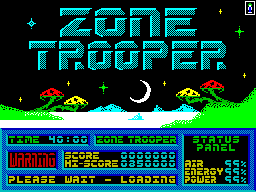
Russell had also finally finished the dreaded “Zone Trooper” on the Spectrum and Amstrad, much to his relief. What had started a simple C64 conversion, had run and run, and it wasn’t even that good to begin with!
Now Dave had to think about what he was going to do next. Attending lectures at Bell Street Tech and also writing a game had been a chore, in fact he would sometimes sit at the back of the lecture halls and only seem to be taking notes when in fact he was working on his game. One of them needed his full attention.
He chose writing games.
His lecturers never understood his decision; ‘writing games’ was a phrase said with scorn. As far as they were concerned, only Systems Engineers made money. Games had yet come out of the cottage industry stage and the education system just didn’t get it. Few of them had even seen a game of the kind Dave was writing, let alone play one and even less had they tried to write one. One of the lecturers wasn’t even familiar with programming in assembler, something which gave the essential edge over writing in the high-level languages which were the only things that they could envisage.

Dave has long since proven to have made the right choice and proven them wrong. Only years later did the slow process of getting clued-in about games take place and Abertay University finally showed its understanding by giving Dave an honorary degree and making him a fellow of the university.
Recognising where games were going and holding up Dave as an example, Abertay created the very first Computer Games Course in the country. Since Dundee has a very high concentration of developers per square-inch, the course is now highly sought after by many students from all over the world. Many of them now give lectures there and help keep the course sharp and up to date, particularly since its in their own best interest. Some of the best talent to apply for jobs are gradates from Abertay.

